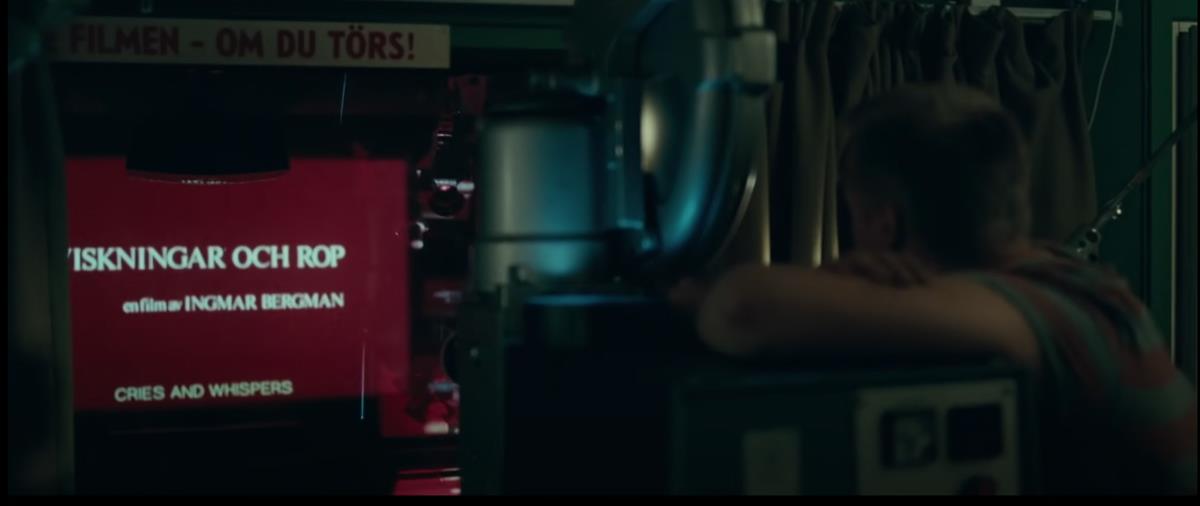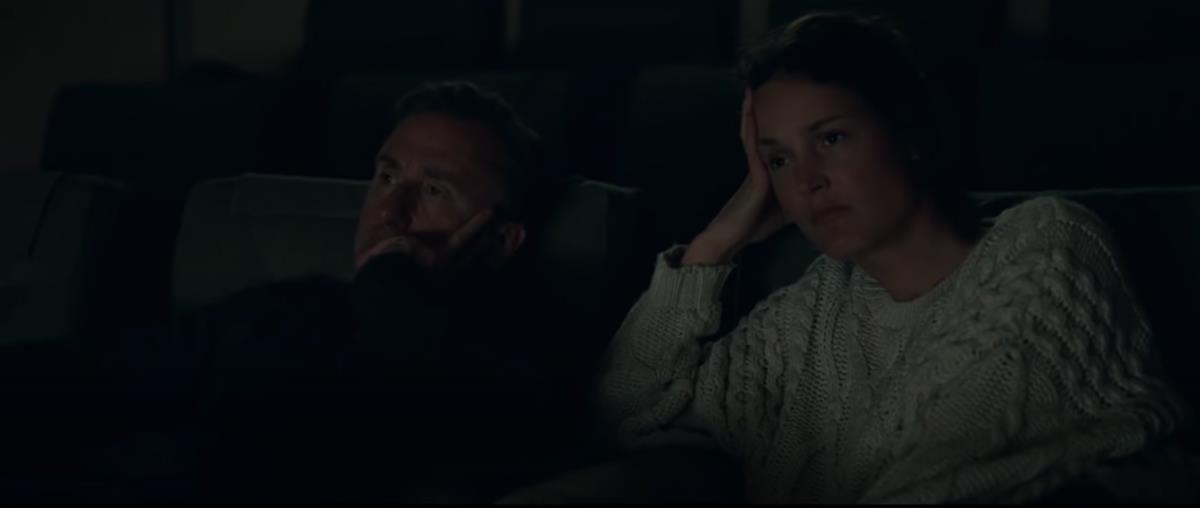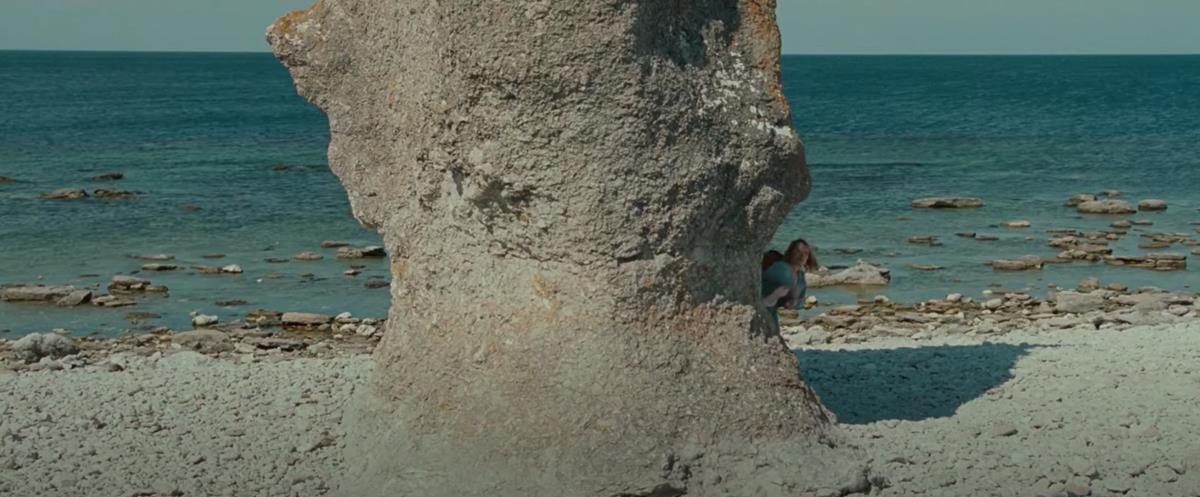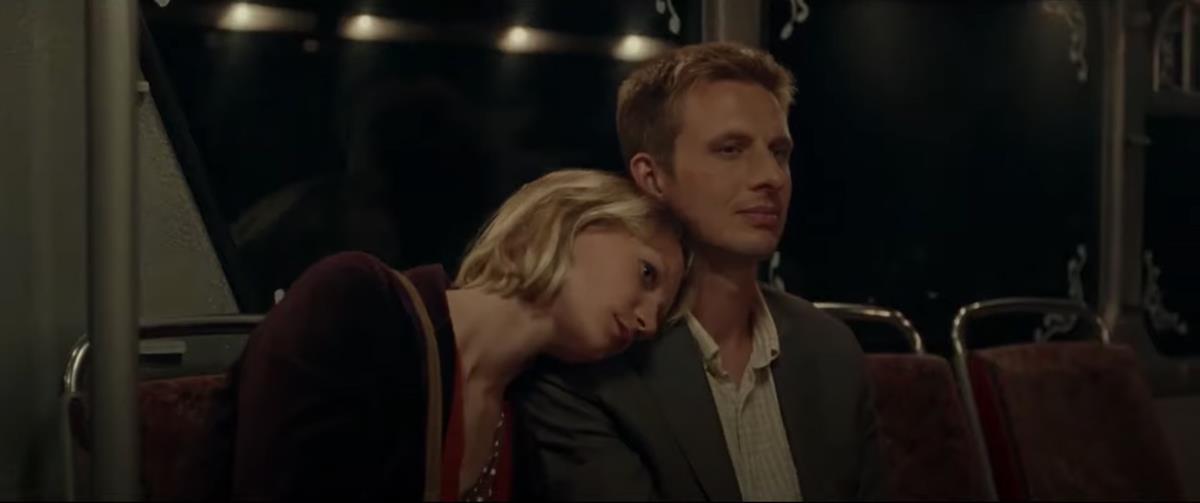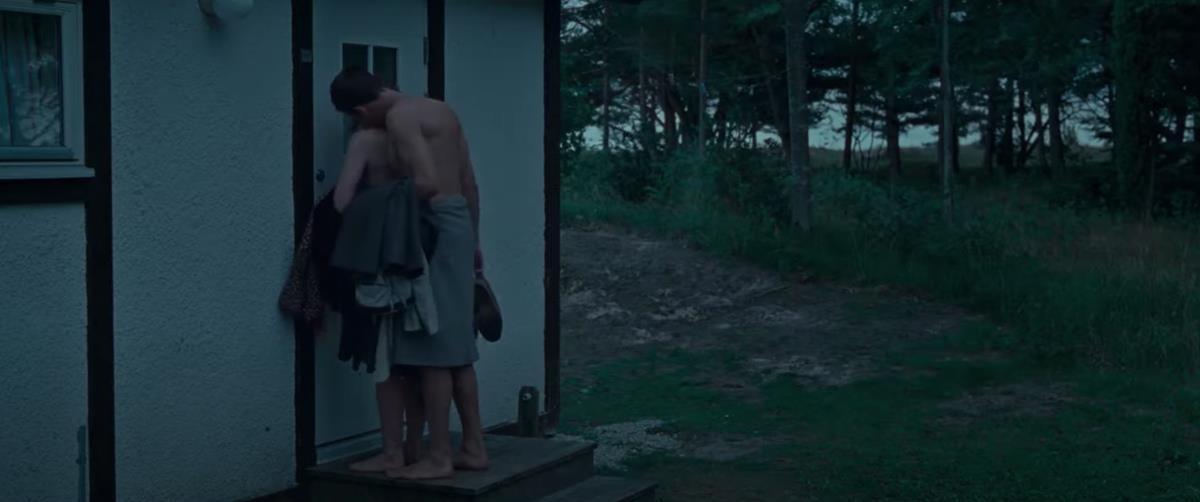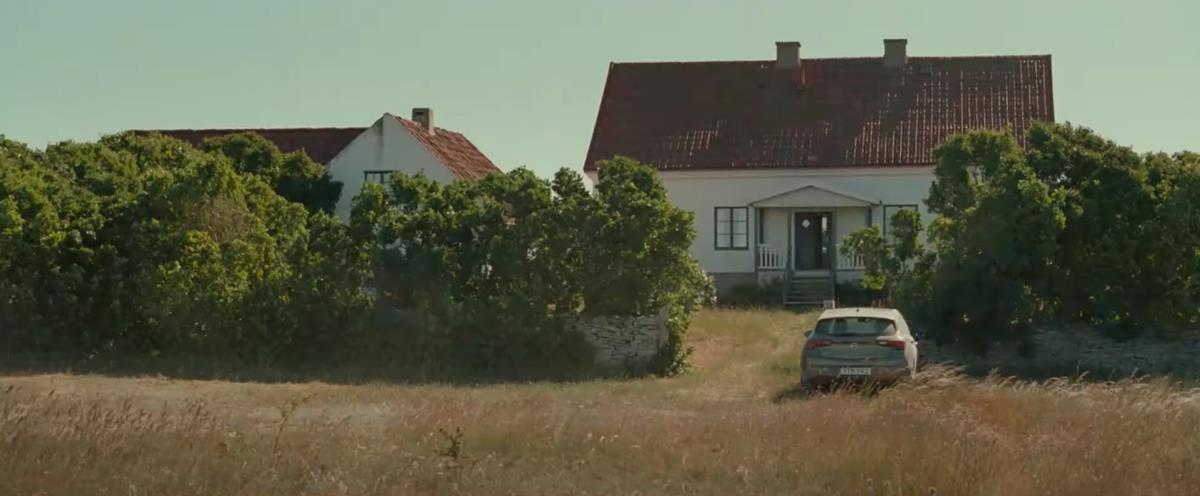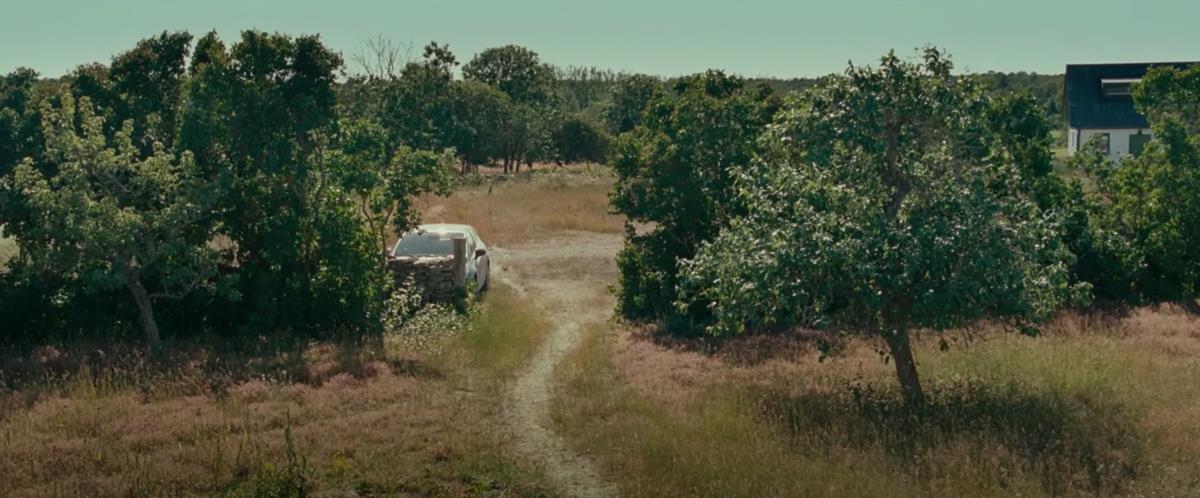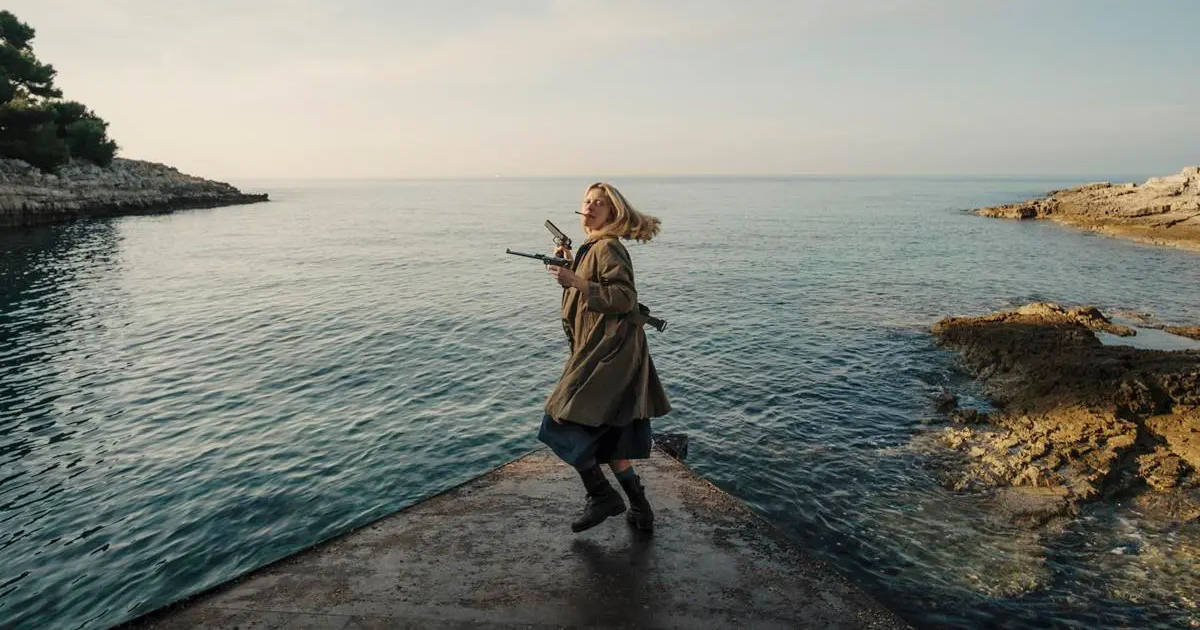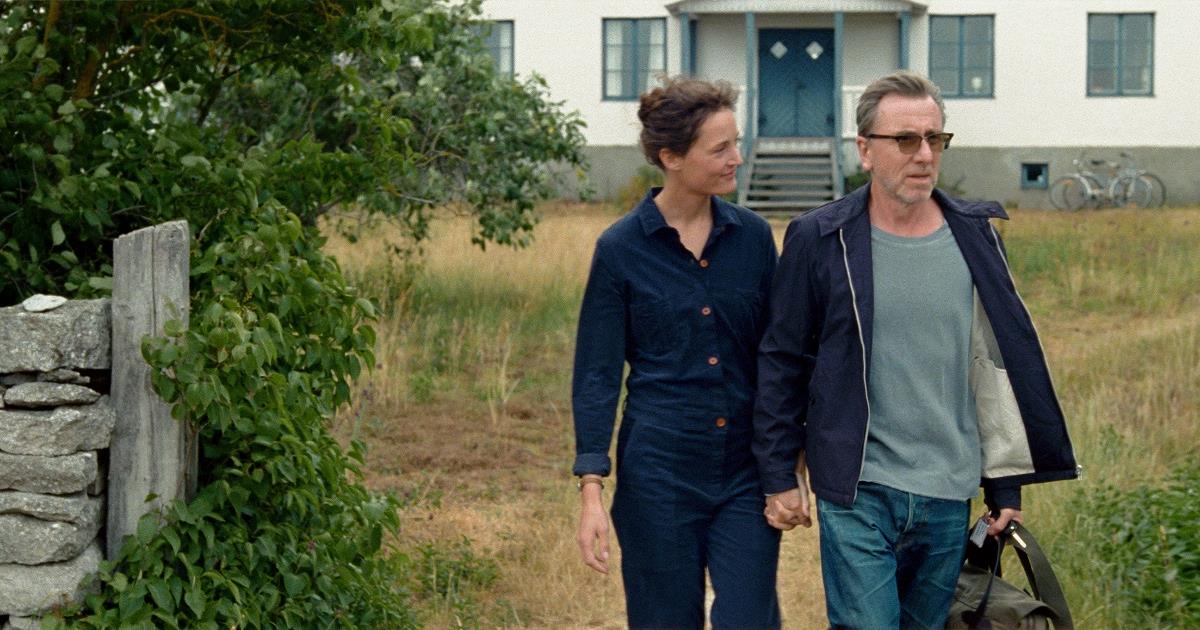
It’s not often that you hear a director of photography complaining about using film for their project; they’re usually animated. But French DP Denis Lenoir is in no doubt that his new film Bergman Island would have been better off shooting digitally.
He commented about the film’s director, Mia Hansen-Løve’s, love of celluloid, “She only accepted to shoot in digital on her film Eden, because of a lack of budget. But on this film, she was fully decided to return to film, but in 2-perf to save on negative and on laboratory fees. I wasn’t at all excited about this decision!”
Lenoir’s grumbles with film continued after such a bad experience with a local film lab that he pulled the job from them. You can hear the exasperation when he spoke with AF Cinema, the Association of French Directors of Cinematography. “We were working with a film lab in Stockholm at the time that really neglected our screen tests, and we found ourselves with wide format dailies (35mm 2 perf is in 2.4:1 by default). If you add the scratches and the mishandled dust specks everywhere, these first unconvincing results immediately pushed me to delocalize our process and scans to Belgium.”
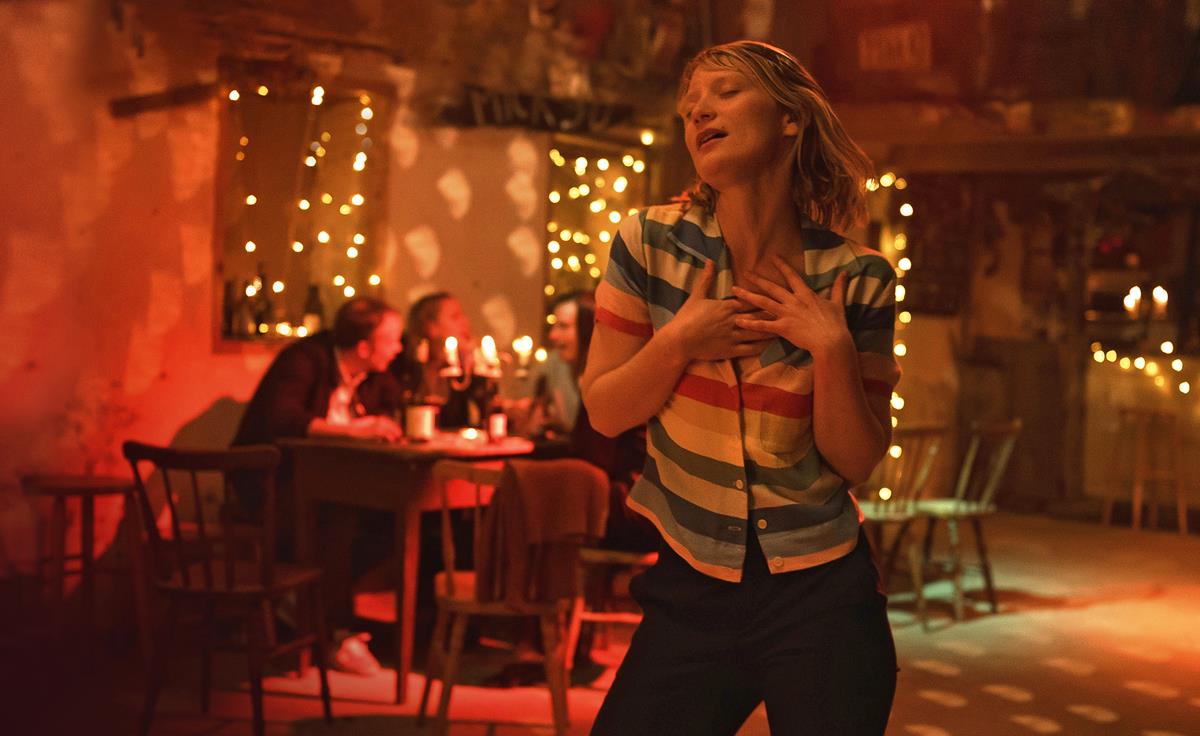
His gripes with celluloid led the interviewer to question him on his view of film’s future. “I like 35mm but I’m not nostalgic for it. I think that the increased sensitivity on digital cameras allows DPs to no longer have to light for exposure. This is not at all the case in film, unless you unreservedly rely on underexposure, which I never used to do, since I always wanted to deliver a dense negative.”
But Lenoir did concede that film has one advantage over using digital cinematography, “I’d admit there is one advantage, motion blur. It really doesn’t look as nice in digital. Each image in a panoramic shot is sharper in digital; really, too sharp. But even faced with this objective difference, digital solutions are still being developed.
“Experimental techniques in post-production in the USA have already shown that it is possible to recreate or reduce the motion blur at the level of each digital image. So, it’s easy to imagine that post-production techniques will soon be able to be applied to every scene of a film that would require it.”
In an interview with American Cinematographer, Lenoir expanded on how he used the post-production phase to fine-tune the images. “I like to put some warmth in the highlights and some blue in the blacks. But this time, I discovered in the first exterior shots that the highlights were cold, almost on the cyan side, perhaps from the development.” He decided “not to fight it, remembering what I always say to students — go with your images, whatever they are, not against them.”
Lenoir admits that most directors enter “the coloring process with the desire, conscious or not, to stick to the film they have given birth to in the editing room.” But for him, “this is the moment to discover the film that exists without us knowing it yet — away and possibly even against what I had in mind when filming, and away and possibly against the workprint they were editing with.”
READ MORE: Denis Lenoir, ASC, AFC, ASK details his visual approach to this romantic drama, which entailed shooting on film, naturalistic lighting, and embracing the images. (American Cinematographer)
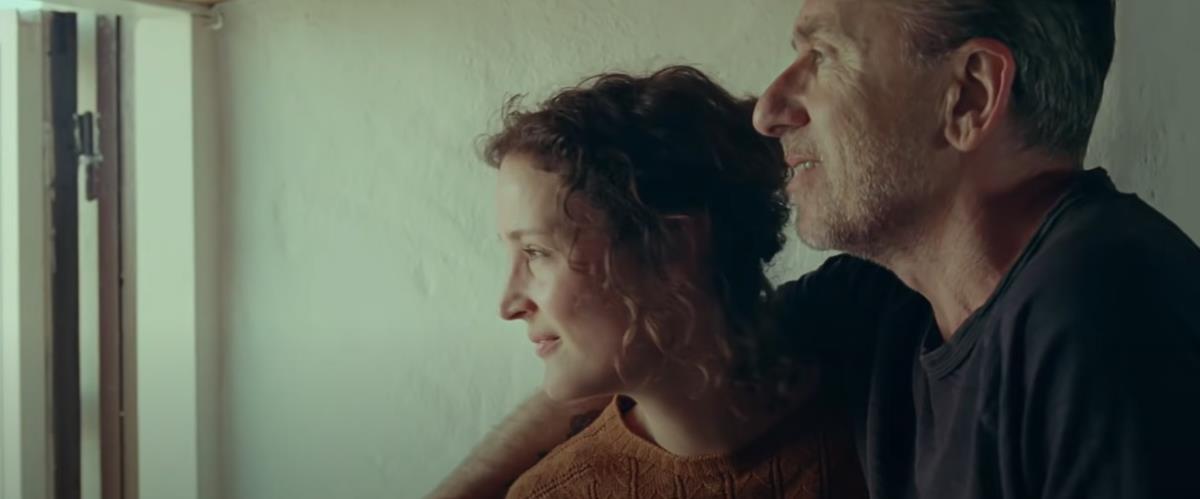
But maybe Lenoir had the last laugh as far as the use of film was concerned, “Mia originally wanted to shoot the film in 1.85:1 aspect ratio. But, as early as scouting, I began to suggest to her that we work in 2.4:1. Nonetheless, she wasn’t persuaded, thinking that her first English-language film didn’t need what she felt was an overly American touch.
“The other, more unexpected consequence was that Mia watched the tests in wide format and finally agreed that 2.4:1 was definitely made for the Island of Farö, to my great satisfaction!”
READ MORE: Interview with Denis Lenoir, AFC, ASC, ASK, about “Bergman Island”, by Mia Hansen-Løve (AF Cinema)
Apart from the discussions over the film’s format, it seems that Bergman Island was a happy shoot, although stretched over a two year period when a couple of the lead actors couldn’t reschedule other commitments .
Lenoir explains how the production survived and was able to carry on. “The film could have stopped before it had even begun. But Mia, who is extremely resourceful, bounced back and offered a role to actress Vicky Krieps. She accepted the role, but the character of Tony remained without an actor. Mia convinced the producers to begin a first session of shooting, beginning with the ‘film within a film’ parts, played by Mia Wasikowska and Anders Danielsen.
“But, because she knows that it is important to lock in one’s cast, she insisted on filming as many scenes as possible with Vicky Krieps. Shooting began in early August and ended in mid-September 2018. We parted ways with the film unfinished, hoping that the missing actor would be found so that we could return to work the following summer. Finally, Tim Roth joined the film during the winter, and we returned to Bergman’s island for a month in early June 2019.”
You may think from the format wars with the director and troubles with signed-on leading actors that this film was an unhappy experience, but Hansen-Løve’s experience was akin to a tribute to the legendary Swedish filmmaker. “Bergman Island is actually a film that, despite a few incidents, brought me unprecedented joy. It’s probably my first film that somehow got written ‘all by itself,’ without the pain I usually feel during the writing process. I felt like doors that had been locked so far were opening and that the island made it possible.”
“I like 35mm but I’m not nostalgic for it. I think that the increased sensitivity on digital cameras allows DPs to no longer have to light for exposure. This is not at all the case in film, unless you unreservedly rely on underexposure, which I never used to do, since I always wanted to deliver a dense negative.”
— Denis Lenoir
Hansen-Løve had started developing a passionate relationship with Bergman’s work about ten years before and felt magnetically drawn to the island. She had written a film script about a director writing a film script while she was on holiday with her husband. This slightly meta theme seemed destined to be filmed on the Swedish island of Farö where Bergman had lived and worked and shot many of his famous films. He died there in 2007.
For Hansen-Løve, “there was never an option for me to not film on film, but I thought I would film in 1:85,” she told Filmmaker Magazine. But once the filmmakers arrived on Farö, “our experience on the island — watching the island, discovering it, wondering how we were going to film it — progressively led to wanting to film scope because it would be more faithful to my vision of the island,” she said.
“It was the result of my observation of the island, of its light, of its space, of its atmosphere that made me want to film in scope. And I [didn’t think that] because Bergman didn’t do it, I wanted to do it. It’s just that I noticed that Bergman didn’t do it. He never filmed in scope. I thought, ‘Oh, that would be part of how to film the island in a different way.’ ”

READ MORE: Socks, Scope and 35mm Projection: Mia Hansen-Løve on Bergman Island (Filmmaker Magazine)
Farö has become something of a Bergman theme park with bus tours and lectures, but the island became the central character for the movie. Hansen-Løve insists that the island’s timeless landscapes, stone walls, wildflowers, black sheep, countless birds played their part. “Bergman’s presence was overwhelming, but it turned out to be both soothing and stimulating.”
Lenoir agreed with how the island suited the story so much that shooting the film in part was easy and anyone could have done it, he claimed. “For example, the nighttime marriage scene in Bergman Island. I thought it was very beautiful in the camera’s viewfinder. But, in reality, few elements of this scene are my doing. The set is just magnificent, the sunset, splendid.

“The set designer had placed lanterns and torches at just the right places. Any one of my colleagues would doubtlessly have done just about the same thing as I did in terms of set lighting on the image wouldn’t have suffered any great disparity.”
Lenoir’s false modesty seems part of his character as he praised other crew members. “Our Belgian key grip, Témoudhine Janssens, was really one of the pillars of this film. Because Mia wanted to use a great deal of camera movements, he was summoned daily to install meters upon meters of tracks with his two grips.
“But the camera never went on extravagant moves. The director’s rhythm and the choreography with the actors made these movements rather discreet and natural. The frequent use of narrow tracks was also appropriate. The reduced floorspace it took up made it easier to do backwards movements facing the actors, who were standing on either side of the track.”

Lenoir concludes that he hopes that his “invisible” photography was appreciated on the film; perhaps more false modesty. “I’m coming to realize that many directors ask me for an ‘invisible’ photography. I think this is a very French concept and that perhaps I left for the USA at a time in my career when I wanted to make films that were more ‘visually marked.’
“But, with time, I must admit that invisible photography is really what I do best! On Bergman Island, I hope that I’ve succeeded in obtaining discreet, yet extremely pleasant, lighting. I wanted to succeed at the unreconcilable, photography I’m proud of but that no one notices!”
LIGHTS, CAMERA, ACTION! SPOTLIGHT ON FILM PRODUCTION:
From the latest advances in virtual production to shooting the perfect oner, filmmakers are continuing to push creative boundaries. Packed with insights from top talents, go behind the scenes of feature film production with these hand-curated articles from the NAB Amplify archives:
- Savage Beauty: Jane Campion Understands “The Power of the Dog”
- Dashboard Confessional: Ryusuke Hamaguchi’s “Drive My Car”
- “Parallel Mothers:” How Pedro Almodóvar Heralds the New Spanish Family
- “The Souvenir Part II:” Portrait of the Artist As a Young Woman
- Life Is a Mess But That’s the Point: Making “The Worst Person in the World”
“Bergman Island is Hansen-Løve’s ode to the passage of time, to the way the years complicate what we ask from love and from ourselves,” says Critical Mass’ Annie Geng. The film “melts fully into metanarrative,” and as Chris and Tony, played by Vicky Krieps and Tim Roth, take an excursion to an island, the film becomes “a portrait of romantic doubt that swells to existential proportions.”
The play of the double narrative is a nod towards Bergman’s fascination with his “double self.” Bergman says that side of him was “planned and very secure,” but also “unknown… unpleasant… not rational… impulsive and extremely emotional.” Geng proposes the counterpart for Chris is the screenplay she’s writing that then transitions to a movie within the movie.
“Hansen-Løve’s oeuvre explores how we live with the choices others have made for us, particularly when it comes to the big questions: love, self-creation, personal freedom.” In reference to Bergman’s other movies, Chris and Tony even wonder why the films couldn’t have “more lightness, more tenderness” to them.
Hansen-Løve uses her films as her own version of philosophy. “If the preoccupations of the characters in Bergman Island sometimes feel inscrutable, it’s because the fundamental problems they wrestle with — selfhood, art, love — are interminably more so,” says Geng.
READ MORE: The Movies Within Movies of Bergman Island (Critical Mass)
Hansen-Løve already had the idea of the film-in-the-film after her visits to the island to express what writing and filming was to her.
“It seemed to me that the best way to capture that idea was to do a film where I was showing not only the process, but the way you go back and forth between reality and fiction, between everyday life and the imaginary world that’s actually connected to your life,” she told MovieMaker Magazine.
READ MORE: Bergman Island: How Two Trips to Ingmar Bergman’s Home Inspired Mia Hansen-Løve (MovieMaker)
In an interview with Elvis Mitchell for KCRW’s The Treatment, Hansen-Løve shares that Bergman Island isn’t intended to be autobiographical but, just like the other films she’s directed, it is personal. “One of the things that made me want to write to make this film was the feeling that I had never seen cinema represented in films in a way that could really connect with what it is for me,” she explains. While there are films about filmmaking, Hansen-Løve notes that there aren’t many, if any, about the process of writing a screenplay.
Looking back on all the films she’s directed, “they were all dealing with things not necessarily that I experienced myself, but sometimes people I had met, people who were gone, people who were close to me,” she says. It’s easy to compare the story of Bergman Island to Hansen-Løve’s personal life, but that doesn’t mean it’s entirely autobiographical. “And, of course, there is [an autobiographical dimension], but in a way, there is one in all of my films.”
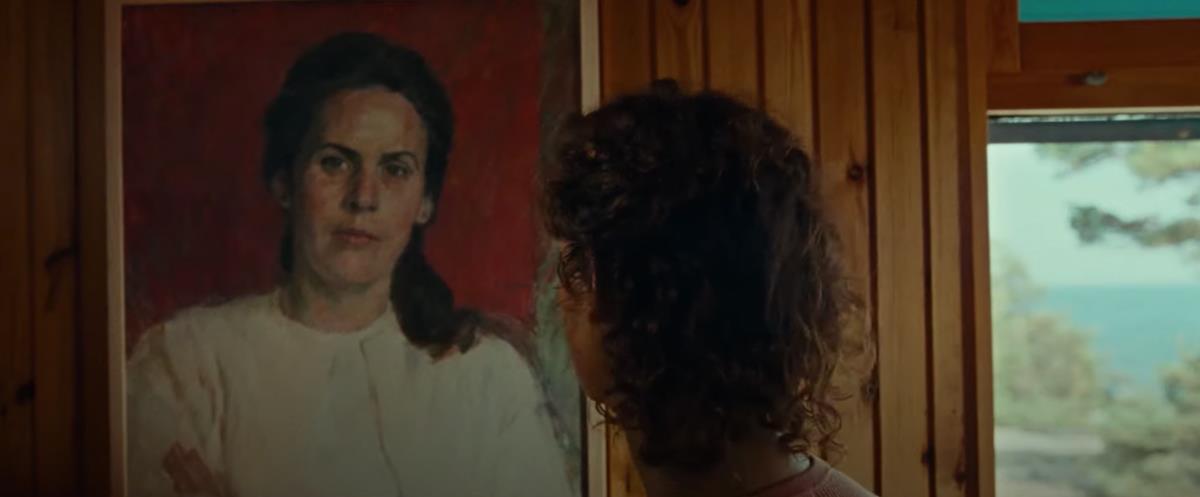
But there is a commonality between many of her films — solitude and adulthood. When asked why she doesn’t like the word adulthood much, she responded with, “Because you’ll always want to oppose it to childhood and I still feel so close to childhood in many ways.” Of course, Hansen-Løve knows that her films also show characters looking for wisdom that comes with growing up while also letting go of certain things.
With Bergman Island, Hansen-Løve didn’t plan on making it a denser movie. She simply wanted to capture the how the writing process can create some confusion, blurring the line between life and fiction. “I had my own quest too while I was writing it, and that led me to that story… it’s not like I wanted to make a film in the film,” she said. “It’s really the emotion and my desire to express what inspiration is for me, what creation is for me, and how you live with that, how you are a woman and a woman in love, and then an artist and how you try to make them cope, and try to make your life work with your life as an artist.”
READ MORE: Mia Hansen-Løve: ‘Bergman Island’ (KCRW)
Want more? Lenoir’s production diary for Bergman Island provides details on the making of this unique feature project set on Fårö, the Swedish island where famed film auteur Ingmar Bergman shot four features, lived, died, and is buried. Head over to American Cinematographer to read Part 1, Part 2, and Part 3.
READ MORE: Bergman Island Journal — Part I (American Cinematographer)
In the video below, watch Hansen-Løve in conversation with Andréa Picard, curator of Wavelengths, TIFF’s year-round avant-garde screening program, about the making of Bergman Island:
Check out this video with Mia Hansen-Løve & Joachim Trier as they discuss their films Bergman Island and The Worst Person in the World at the New York Film Festival:


